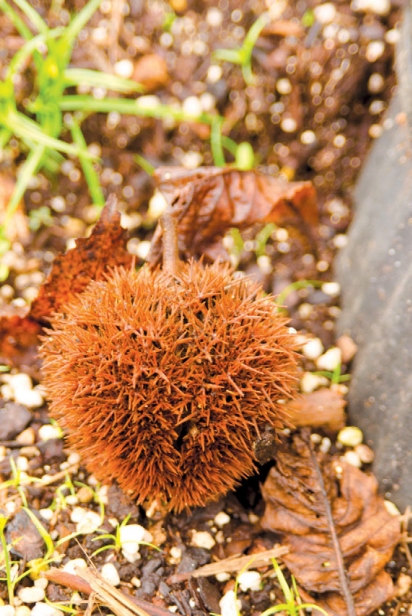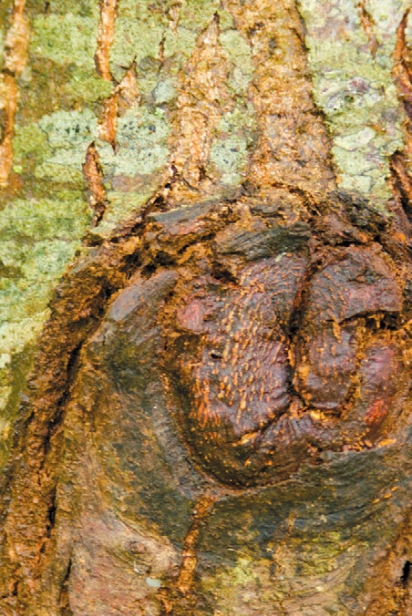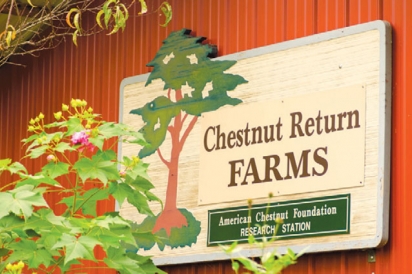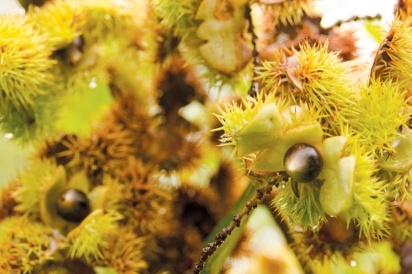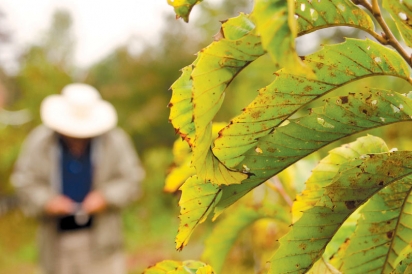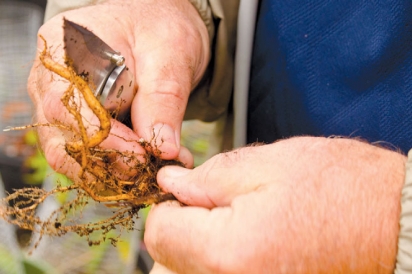The Preservationist: Joe James of Chestnut Return Farm
A Day With Joe James of Chestnut Return Farm
The directions to Chestnut Return Farm are pretty clear, but as I get close, I start to feel like I could end up driving down a dead-end dirt road from which there’s no return. In my book, that’s not all bad. The trees arch from both sides of the road, nearly touching at the top.
Although they’re still thick with green leaves, the occasional blade of gold signals that fall has settled in.
When I get to Joe’s house, Bill Stringer (former head of the Native Plant Society) and Nat Bradford (of Bradford watermelon fame) are already there, hanging out with Joe James on his spacious front porch. Bill came from the opposite direction, down a narrow, bumpy road, a former stagecoach trail. Seeing the look in my eyes, he says, “Don’t go that way.” Next time.
We dive into conversations about plants immediately, with the ease that comes with a shared love–or maybe obsession– with all things green and leafy. In the back of Joe’s house is a rare yellow coneflower that, at one time, grew only along Lake Cherokee in North Carolina. A forester, concerned about its survival, gave Joe a plant to see if he could propagate them. That one flower has become a thick row of plants. They’ve already set seed, and he offers each of us a handful. In the front of the house are special asters, blooms also faded into seed heads. He can’t remember the variety, but no matter; a few of those go into our pockets, too. Nearby is a large fig, grown from a cutting off a 100-year old tree in Charleston. We realize quickly that Joe’s contributions go far beyond chestnuts; he’s preserving our horticultural history.
As we meander toward the chestnut fields, Joe shows us his zinnia patch, their pastel blooms still bending toward the sun on this cool fall day. “Would you like some of the seeds?” he asks. (Was there ever a time that any of us said no to seeds?) And so we each take an envelope of Joe James’ special zinnias, a mix 40 years in the making. Joe worked for Ferry Morse Seed Company before attending medical school. (When it was founded in the 1930s, Ferry Morse was the largest seed company in the world.)
Each year, he planted a row of the zinnias and saved seeds from the colors he liked best – delicate, soft shades.
His appreciation for flowers is never more obvious than when he describes chestnut blossoms. They’re intoxicatingly aromatic, he says; thousands of insects are attracted to their heavy, sultry, sweet scent. We ask how he became interested in chestnuts. He and his father were on an overlook one day, he says, and saw snags down below. He was concerned; why, he asked his father, had those trees died? Were they struck by lightning? In fact, disease was the culprit. What he saw was the aftermath of chestnut blight, which had decimated the American chestnut.
Although Joe graduated from medical school and had a successful orthopedic surgery practice, his concern for the chestnuts never left him. He began his first trials with Chinese chestnuts in the 1980s, and eventually moved on to American/ Chinese hybrids. He noticed that the mortality rate among his hybrids was extreme. Joe’s background as an M.D. made him especially interested in the relationship between the trees’ immune systems and possible pathogens.
The issue turned out to be Phytophthora (root rot), a disease that can be especially devastating to Chinese varieties. Joe worked with Steve Jeffers, a plant pathologist and soil scientist, to identify the disease and begin an inoculation process to increase the plants’ resistance. Progress was slow. From 500 plants that were planted in 2004, only 27 survived. “Just call me the Dr. Kevorkian of the chestnut world,” Joe says.
In 2011, the most recent phase of his research, he started an orchard of 500 hybrids that he refers to as restoration chestnuts, stock that had shown moderate blight resistance. Only 27% died, instead of the expected 70%. He inoculated 90 with Phytophthora. But the biggest surprise was what happened with 80 of his uninoculated trees; they grew to over seven feet tall in 15 months. Looking back at the data, Joe and Steve found that one Chinese parent produced those trees, which meant that a single gene might be responsible for the pronounced resistance to blight. The next phase of their work focused on breeding all of the original American chestnut alleles into the trees to provide resistance to Phytophthora. Ultimately, genetic biodiversity will be the key to the survival of the hybrids. Joe’s seedlings are used by researchers at Clemson, Georgia Tech and Auburn, who are working on a genetic map for chestnuts.
It’s October, and while all of the chestnuts are gone by this time of year, there are still a few nuts on the chinquapins. Chinquapins are understory trees, undervalued cousins of the chestnut. Chinquapin nuts, once free of their burr covering, look shiny and hard. “Just pop it into your mouth, chew it, and then spit out the hull like you would a sunflower seed,” he says. I bite down carefully, not wanting to break a tooth – but it isn’t hard, after all. It’s spongy or rubbery, and the shell comes off easily. And it’s delicious and nutty. “Look at that,” he says, “three different people just tried chinquapins for the first time, and all three of you liked them. That’s remarkable.” We continue to pick and eat. And spit out the shells. We don’t want to stop, but there aren’t many left on the trees.
At the end of the row of chinquapins, we find a huge cherry tomato plant, sprawling over the sides of its enormous container. That plant, says Joe, hasn’t had a bit of disease this year. Many people lost tomatoes to blight or other ailments. This one is still deep green and covered with round red fruit. No one is surprised at its vigor. We christen it the Joe James Cherry Tomato– and take a few with us for next year.
Chestnut Return Farm
Joe James
260 Steve Nix Road
Seneca



